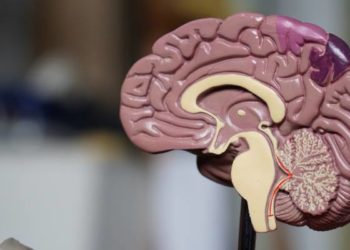Communication errors in radiology associated with negative impact on patient care
1. In a retrospective review of over 380 cases with associated communication errors, over one-third of communication errors within radiology workflow were associated with direct negative impact on patient care.
2. Half of all errors recorded were not associated with communication of radiology results, but still had a similarly negative impact on patient care as errors related to the communication of radiology results.
Evidence Rating Level: 3 (Average)
Study Rundown: Accurate and timely communication between health care professionals and interprofessional teams are crucial for effective and safe patient care. Previous studies have demonstrated that communication errors have contributed to as much as 98 000 medical error-related deaths annually in the United States. However, there has been a lack of data on the specific role of radiology-related communication errors in this area. The purpose of this retrospective cohort study was to explore the impact of radiology communication errors in patient care.
The study performed a retrospective review of over 380 cases that contained communication errors within a quality assurance database spanning 10 years at a single academic medical center. The trial analyzed the nature of each communication error within radiology workflow and determined whether each error had a significant impact on patient care, graded on a 5-point scale. Significant errors included a delay in diagnosis and treatment of emergent findings, malignancies, or unnecessary surgical procedures due to delayed or erroneous communications. At the conclusion of the study, errors related to the communication of radiology results composed the greatest proportion of this cohort at just under half of all errors reported. However, more than half of all errors were related to steps other than the communication of results. Over one-third of communication errors resulted in direct negative impact on patient care, including the performance of unnecessary procedures, delays in diagnosis, decreased patient satisfaction and workflow inefficiencies. Interestingly, the negative impact of communication errors was equally distributed among errors in communicating radiology results and other radiology workflow communication errors. The results of this study highlight the potentially large impact of communication errors across all aspects of radiology workflow and support the use of formal communication guidelines and decision support tools to help minimize errors across the radiology work-flow process. The study is limited by the small sample size and the self-reported nature of the quality assessment database, which may not capture all instances of communication errors. Additional large prospective studies may be helpful to clarify this association.
Click to read the study in AJR
In-Depth [retrospective cohort]: This study retrospectively reviewed all cases from an online quality assurance database in a single institution in the United States from 2004 to 2014. Cases were included if they contained the words “communication errors” within the error classification. Each case was then classified based on the step within radiology workflow (i.e. test ordering, scheduling, performance of examination, interpretation, and result communication). The impact of communication errors on patient care was determined via consensus by two independent, board-certified radiologists and categorized based on no impact, minor, moderate, major, or catastrophic consequences. Overall, 380 cases met the inclusion criteria within the defined study period. At the conclusion of the trial, results communication (47.6%; n = 181) was the most common step to contain an error, followed by performance of examination (30%; n = 114), test ordering (13.9%; n = 53), scheduling (4.7%; n = 18), and interpretation (3.7%; n = 14). The communication errors had an impact on patient care in 37.9% (n = 144) of cases, including 21 minor impacts, 34 moderate impacts, and 89 major impacts. There was no significant difference in the severity of the impact on patient care between communication errors in result communication versus other errors in radiology workflow (p < 0.29).
Image: PD
©2015 2 Minute Medicine, Inc. All rights reserved. No works may be reproduced without expressed written consent from 2 Minute Medicine, Inc. Inquire about licensing here. No article should be construed as medical advice and is not intended as such by the authors or by 2 Minute Medicine, Inc.







